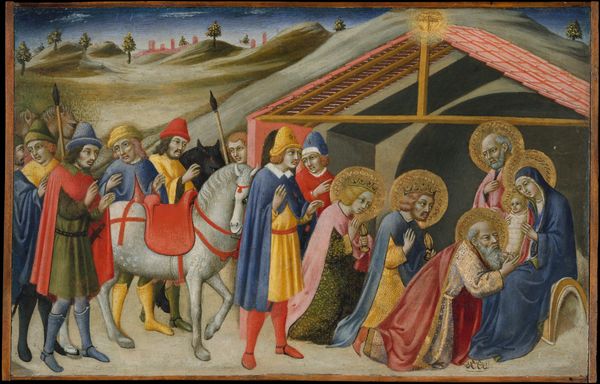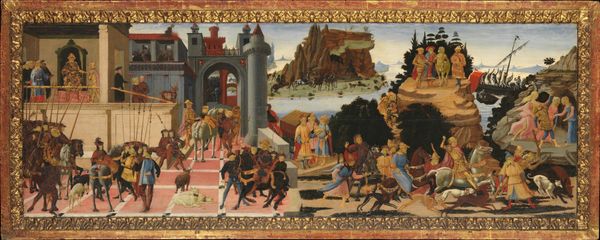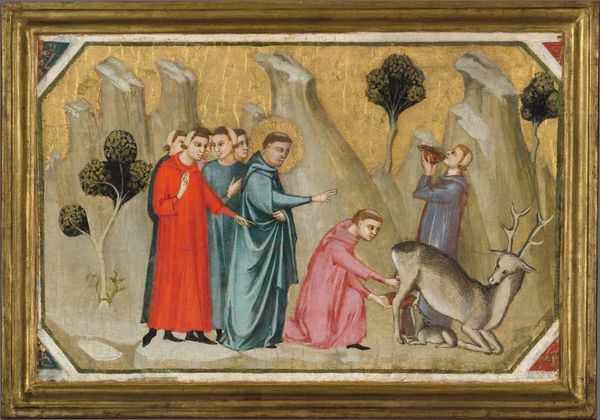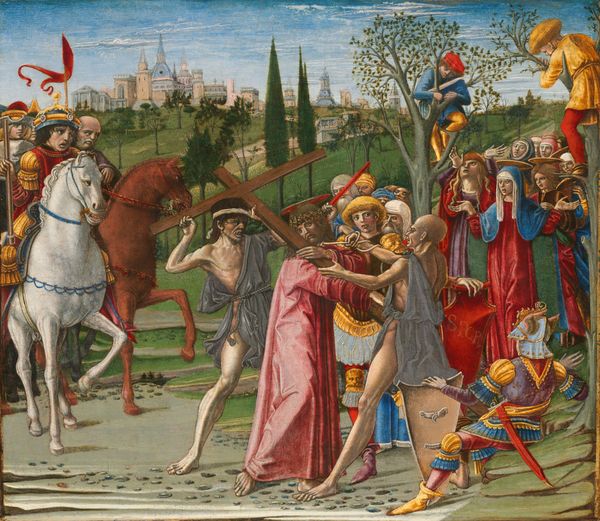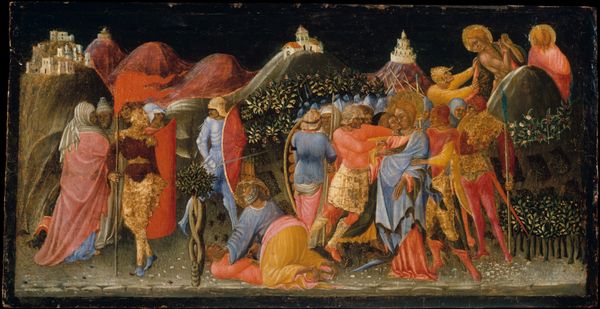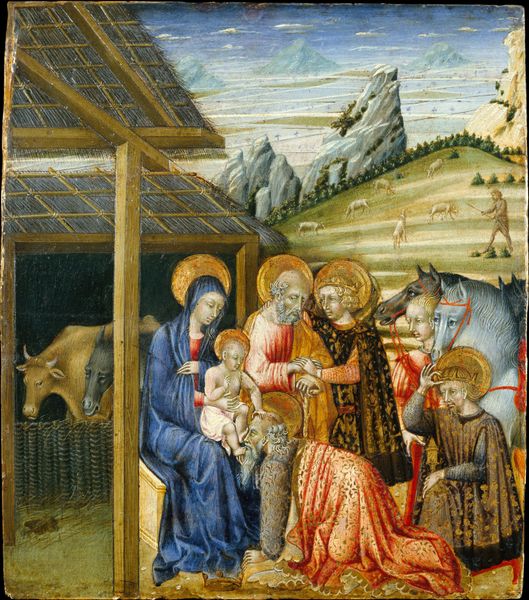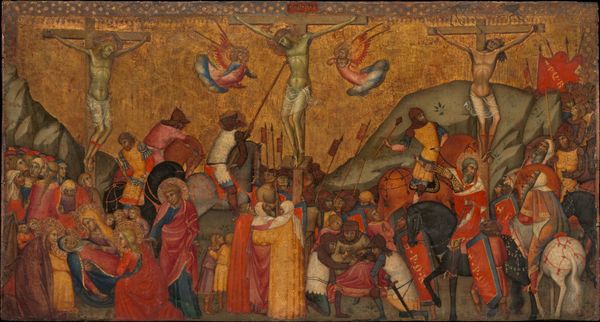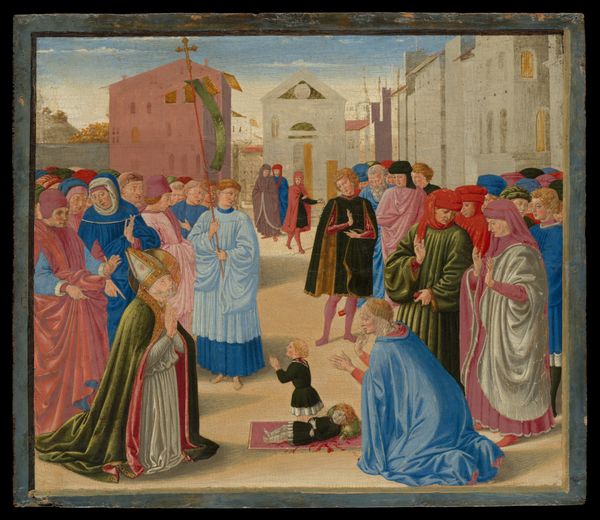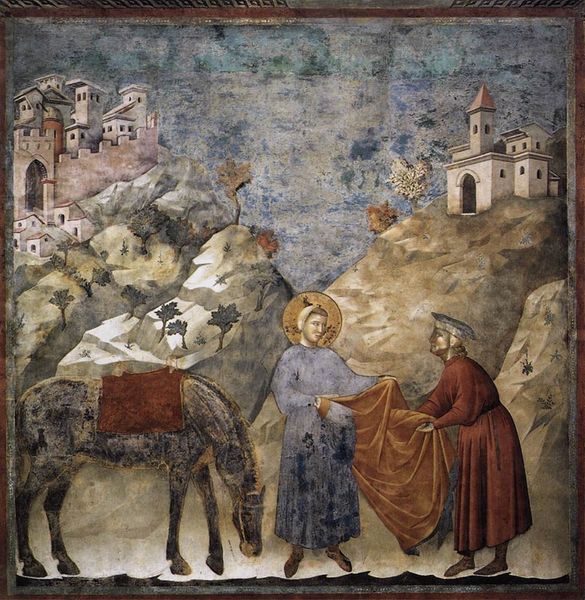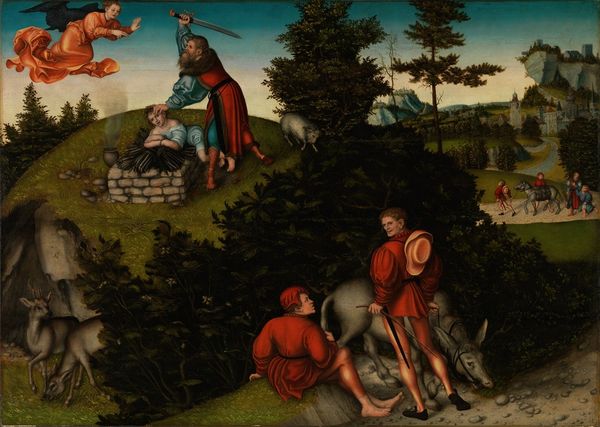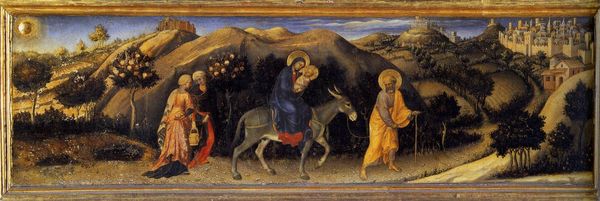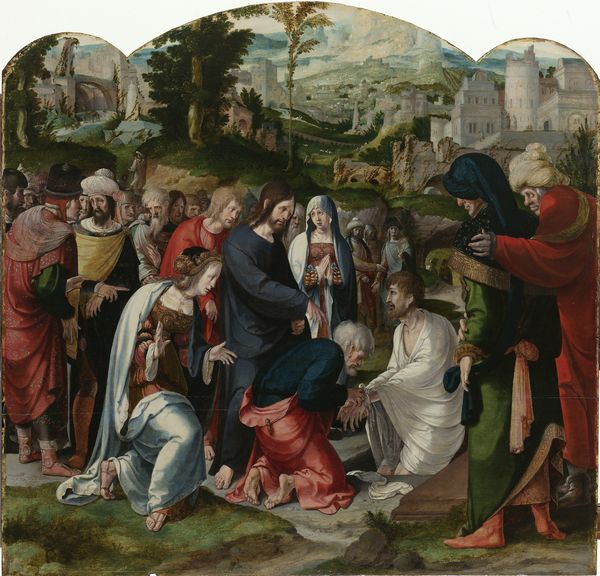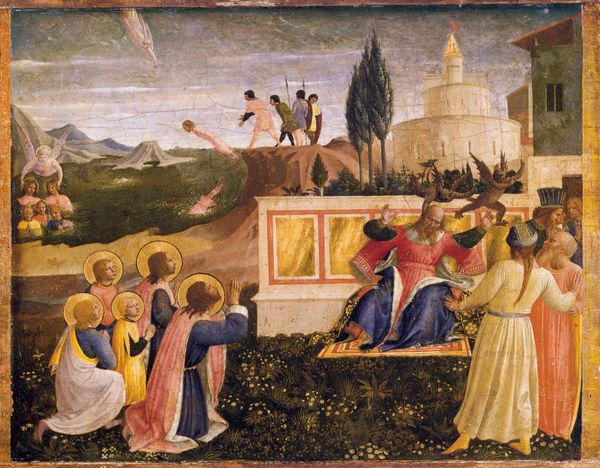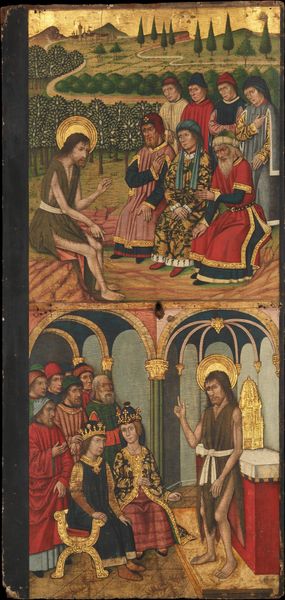
tempera, painting
#
narrative-art
#
tempera
#
painting
#
landscape
#
figuration
#
history-painting
#
italian-renaissance
#
early-renaissance
Dimensions: 21 x 29 cm
Copyright: Public domain
Curator: Sassetta, or Stefano di Giovanni, painted this small tempera on wood panel around 1435. It’s called *The Journey of the Magi* and is currently housed here at The Met. What are your initial thoughts? Editor: It has such a dreamy, almost fairytale quality. The colors are muted, and the landscape is quite stylized. A sense of gentle movement permeates the entire composition. Curator: Absolutely. Sassetta employs visual language that situates the viewer in relation to the travelers' quest. This historical moment gains meaning through both secular and divine symbolic tropes, referencing societal transformations happening within early Renaissance Italy. Editor: The composition's symmetry certainly points to its deeper meaning. Look at how the hills on either side almost mirror each other, and how the magi follow the symbolic star of Bethlehem. I wonder if the artist chose those particular colors for the figures' robes? It all speaks to spiritual awakening. Curator: Consider, too, the socio-political implications of representing this particular narrative. In 15th century Italy, associations of the magi with kings, nobility, and exotic travelers reflected emerging dialogues of power and identity formation—a way of imbuing existing secular structures with divinely ordained authority. The attire certainly reinforces that connection. Editor: And what about the inclusion of animals? Deer on the hills and the hawk-like birds. It's not just a landscape for them to travel through. This painting also says something about humankind's relationship with the natural world as it embarks upon these transformative experiences. The landscape is just as significant in conveying this journey's purpose. Curator: Very insightful. Bringing these visual details into an interdisciplinary discussion helps expand our awareness of how meaning accrues across time and resonates even in a contemporary setting. Editor: It shows how vital the tradition of iconographic symbol construction truly is for articulating both the spiritual and lived conditions across time and culture. Thank you for sharing such an interesting sociopolitical context with me, it adds even more richness to these carefully conceived symbols.
Comments
No comments
Be the first to comment and join the conversation on the ultimate creative platform.
